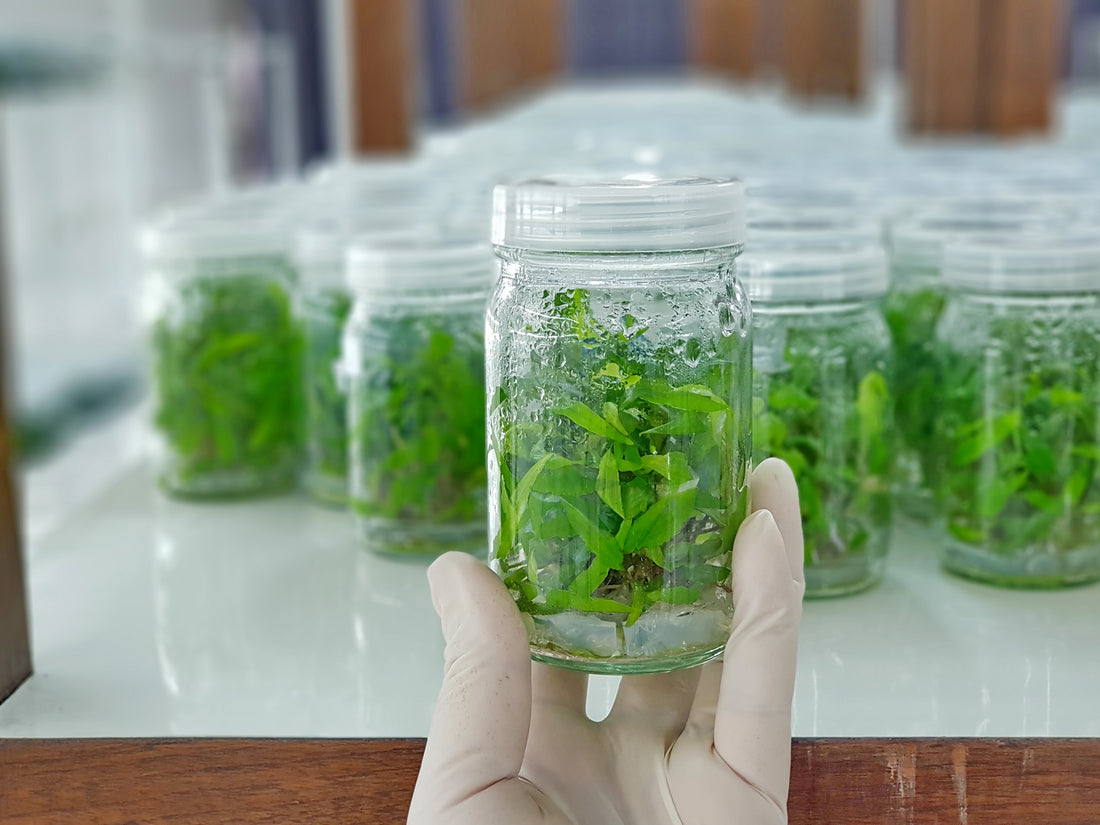
Potato Germplasm Storage

Germplasm refers to the genetic material transferred from parents to offspring through germ cells. It’s a raw material used by the breeders to develop a variety of crops.

Introduction
Germplasm refers to the genetic material transferred from parents to offspring through germ cells. It’s a raw material used by the breeders to develop a variety of crops. That’s why conserving the germplasm has a significant role in an extensive range of breeding experiments and programs.
Germplasm conservation refers to the techniques used to preserve the genetics of a particular plant for its uses in the future. The two methods used for the purpose include:
- In-situ conservation: It’s the conservation of germplasm in their natural environment. It includes biosphere reserves, such as gene sanctuaries and national parks.
- Ex-situ conservation: It’s the conservation of germplasm in an artificial condition mimicking their natural environment, such as gene banks, which is normally done by preserving seeds of the plants.
Other than these two, the other technique for germplasm observation is the in vitro method.
In vitro methods for germplasm conservation
In vitro techniques utilize meristems, shoots, and embryos for the germplasm conservation of vegetatively propagated plants. Moreover, it can also be used to preserve the germplasm of plants having recalcitrant seeds and genetically modified or engineered materials.
The advantages associated with in vitro germplasm conservation include:
- Storing large amounts of materials in limited space.
- Maintaining the preserved germplasm in an environment free from pathogens.
- Maintaining a germplasm stock that can be used anytime to produce any number of plants.
- Protecting conserved germplasm against nature's hazards.
- Minimal obstacles in the transportation of plant materials through national and international borders.
The approaches used for germplasm storage are:
- Cryopreservation (freeze-preservation)
- Cold storage
- Low-pressure and low-oxygen storage
Germplasm Storage of Potato Plants
Germplasm storage is one of the essential aspects of breeding programs. Below is a procedure for culturing potato plants and conservation of their germplasm using in vitro techniques, which is taken from the book of Tissue Culture Techniques for Horticultural Crops written by Kenneth C. Torres.
Materials Required
Healthy medium-sized potatoes, Mason Jars, 6 small-mouth Mason jars, 1000-ml beaker and 250-ml beaker, sterile plastic or glass Petri plates, Bunsen or alcohol burner, forceps and scalpels, Waterproof marking pen and labels, Culture tubes (20 x 150 mm) with closures and slant racks to hold them, 125-ml Erlenmeyer flasks, 1000 ml of 20% Clorox solution supplemented with a few drops of Tween-20, 1000 ml of sterile distilled water, and 200 ml of 95% ethanol.
Media Preparation
Solid shoot multiplication medium
| MS salts (Macro- and micronutrients) | |
| Sucrose | 30.0 g/liter |
| Agar | 8.0 g/liter |
| GA3 | 0.25 mg/liter |
| Calcium pantothenic acid | 2.0 mg/liter |
| MS Modified Vitamin Mixture | 1.0 ml/liter |
Liquid shoot multiplication medium
| MS salts (Macro- and micronutrients) | |
| Sucrose | 20.0 g/liter |
| GA3 | 0.4 mg/liter |
| BA | 0.5 mg/liter |
| NAA | 0.01 mg/liter |
| Calcium pantothenic acid | 2.0 mg/liter |
| MS Modified Vitamin Mixture | 1.0 ml/liter |
Germplasm storage medium
| MS salts (Macro- and micronutrients) | |
| Sucrose | 30.0 g/liter |
| Agar | 40.0 g/liter |
| Mannitol | 8.0 g/liter |
| MS Modified Vitamin Mixture | 1.0 ml/liter |
Procedure For Potato Germplasm Conservation
- Keep the basal end of potatoes in a mason jar filled with water and leave it for several weeks to obtain sprouting eyes.
- Prepare the liquid shoot multiplication medium as mentioned above and dispense 10 ml into culture tubes. Similarly prepare liquid shoot multiplication medium and dispense 25 ml of an Erlenmeyer flask.
- Remove potato sprouts and sterilize them for 10 min in 20% Clorox solution.
- Rinse the tissues with distilled water three times.
- Section the sprouts into 10-mm segments containing one node.
- Inoculate one node per culture tube and four nodes per culture flasks.
- Incubate cultures under low-light conditions at 25°C. Liquid cultures should be agitated at 80-100 rpm.
- After three weeks, remove shoots from the culture and divide them into sections containing one node.
- Reinoculate the explants onto a fresh medium as already described in previous steps. Repeat this procedure every 3 weeks.
Germplasm Storage
- Prepare germplasm storage medium as described above and dispense 10ml of it in culture tubes.
- After two weeks of cultures in the micropropagation, collect shoots and divide them into sections containing one node.
- Place one section into each tube containing a germplasm storage medium.
- Store cultures in low light at 8°C.
How Plant Cell Technology Is Helping Culturists Worldwide In Their Tissue Culture Application?
Plant Cell Technology is helping tissue culturists around the world by providing unique and world-class products and services that smoothen their process. It has MS media, agar, gellan gum, Plant Preservative Mixture (PPM), culture vessels, Biocoupler (TM), and masks in its store to facilitate your processes.
And, that’s not it! Plant Cell Technology also offers consultation services to culturists of all sizes that help to get instant solutions to your tissue culture problems.
So, visit plantcelltechnology.com today and find out more about our product and services and how they help you to excel in your tissue culture processes.
Happy Culturing!!
Blog Categories
View by Level
Popular Blogs

New Technical Agar Vs Supreme Agar
Introduction What’s the secret element that supports and holds plants in vitro? Not sure? It’s the solidifying agent. Solidifying agents...
Read More
Get the Protocol: How to Tissue Culture Nepenthes Using Nodes and Seeds
Introduction This plant is non-vegeterian... ...and we're not kidding! Nepenthes belongs to one of the most interesting families of carnivorous...
Read MoreSubscribe to Our Newsletter







Join the conversation
Your email address will not be published. Required fields are marked